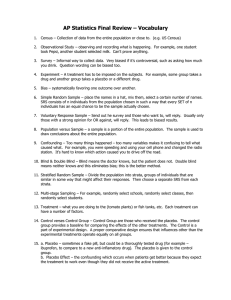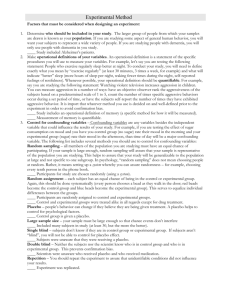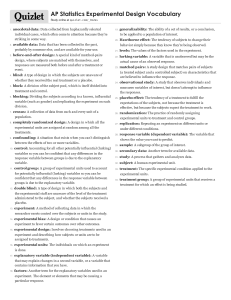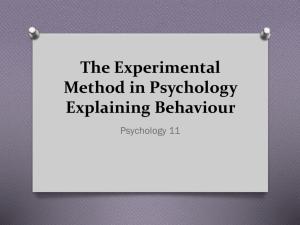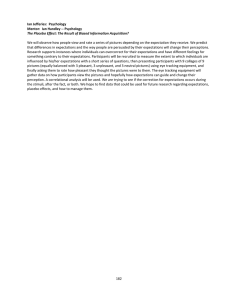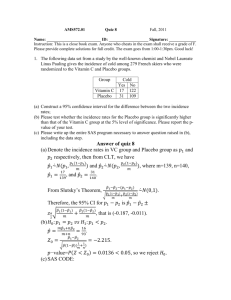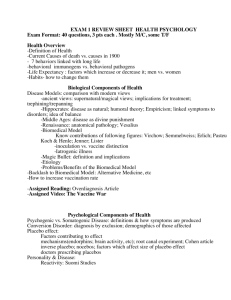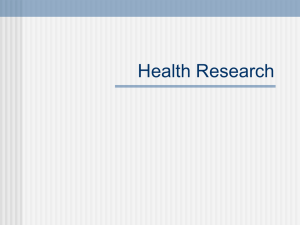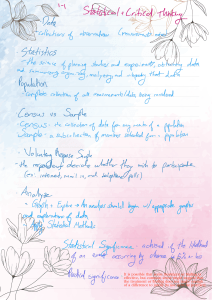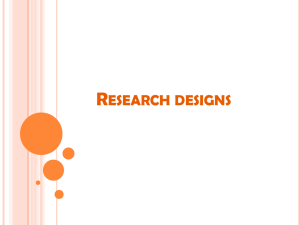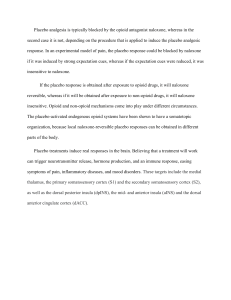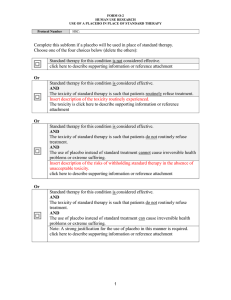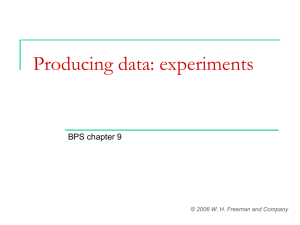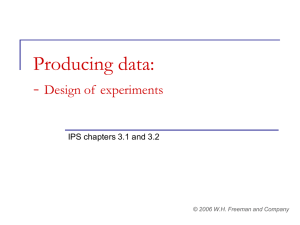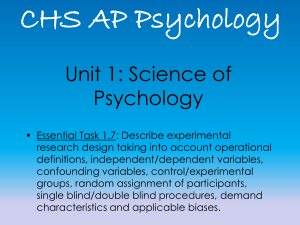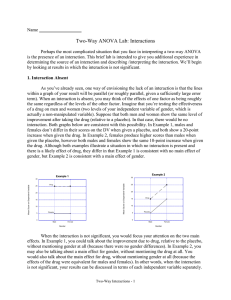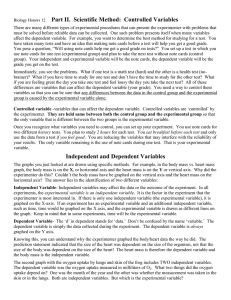Document 14147124
advertisement
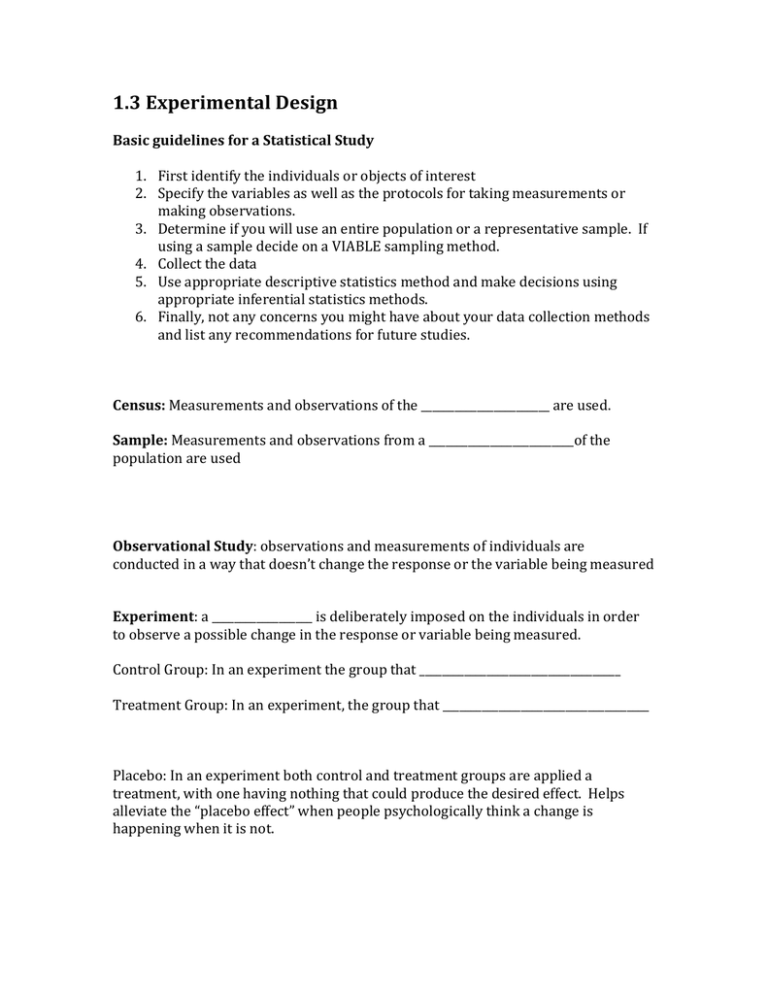
1.3 Experimental Design Basic guidelines for a Statistical Study 1. First identify the individuals or objects of interest 2. Specify the variables as well as the protocols for taking measurements or making observations. 3. Determine if you will use an entire population or a representative sample. If using a sample decide on a VIABLE sampling method. 4. Collect the data 5. Use appropriate descriptive statistics method and make decisions using appropriate inferential statistics methods. 6. Finally, not any concerns you might have about your data collection methods and list any recommendations for future studies. Census: Measurements and observations of the _______________________ are used. Sample: Measurements and observations from a __________________________of the population are used Observational Study: observations and measurements of individuals are conducted in a way that doesn’t change the response or the variable being measured Experiment: a __________________ is deliberately imposed on the individuals in order to observe a possible change in the response or variable being measured. Control Group: In an experiment the group that ____________________________________ Treatment Group: In an experiment, the group that _____________________________________ Placebo: In an experiment both control and treatment groups are applied a treatment, with one having nothing that could produce the desired effect. Helps alleviate the “placebo effect” when people psychologically think a change is happening when it is not. Randomized two-­‐treatment experiment: Double Blind Experiment: Lurking and confounding variables: EX: Replication Surveys: A set of questions to gather data or to see if someone should be included in a study Potential Pitfalls Non response Voluntary response Hidden Bias Generalizing Results

